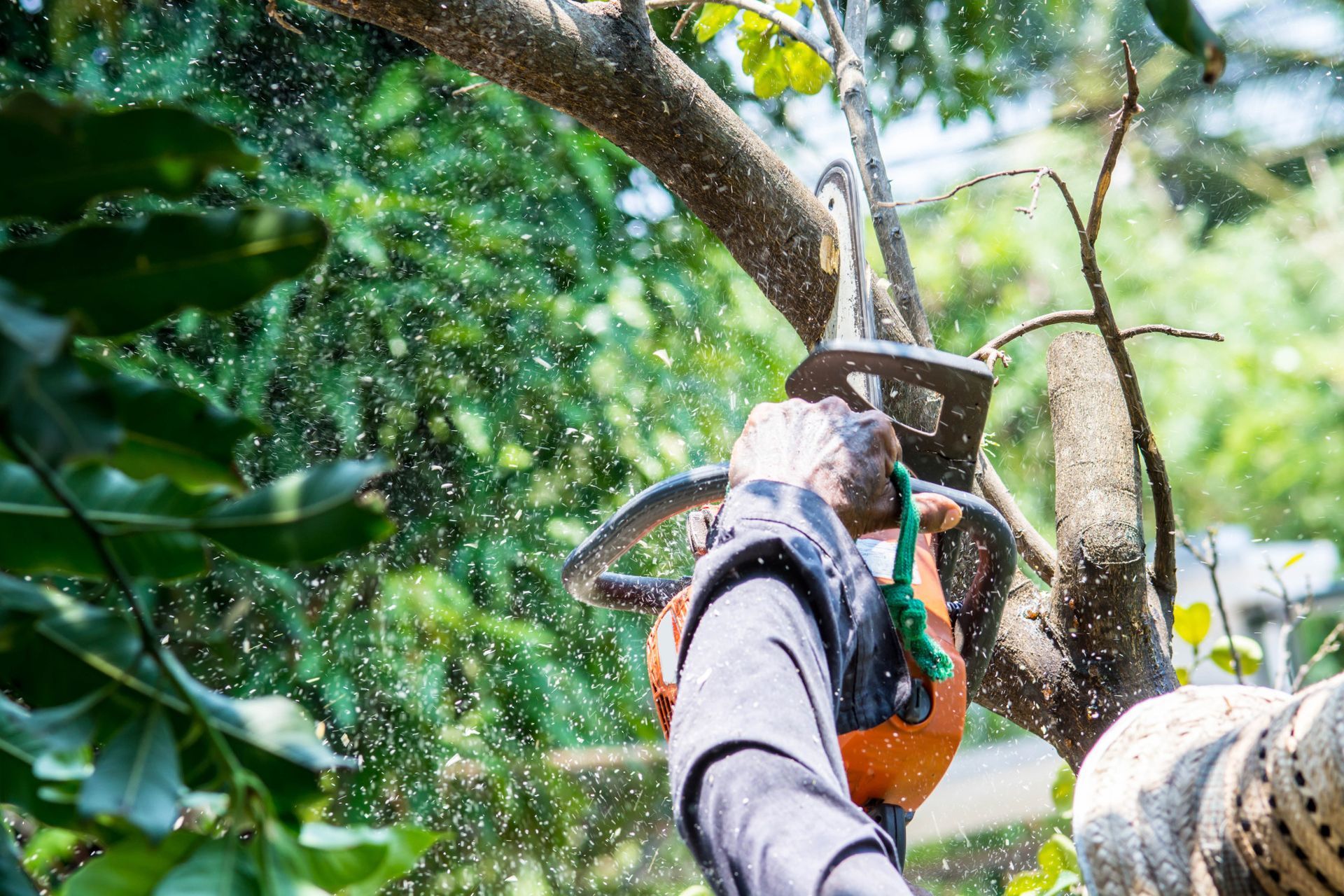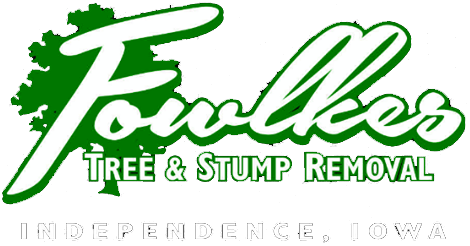Top 7 Signs It’s Time to Call a Tree Removal Service

Trees are an essential part of any healthy, vibrant landscape. They provide shade, boost property value, support local ecosystems, and enhance curb appeal. However, even the strongest trees can suffer from age, disease, storms, or poor soil conditions. When that happens, they can quickly shift from a beautiful asset to a serious liability.
Knowing when to call a
tree removal service can help you avoid property damage, personal injury, and costly repairs. In this post, we'll explore the top 7 tree removal signs every property owner should watch for. Whether you’re a homeowner maintaining your yard or a commercial property manager safeguarding your investment, this guide will give you the knowledge you need to take timely and effective action.
1. Visible Signs of Decay or Disease
One of the most common—and often most overlooked—tree damage signs is visible decay. If your tree has mushrooms or fungus growing at the base, bark that’s peeling or cracking, or cavities forming in the trunk, it’s a red flag. These are all signs that internal rot or disease may be compromising the tree’s structural integrity.
What to Look For:
- Soft, crumbling wood around the trunk or limbs
- Dead or falling branches
- Discolored leaves or premature leaf drop
- Fungal growth (like conks or mushrooms) around the roots
These symptoms indicate that the tree may be too far gone to save. In such cases, a professional
tree removal service like
Fowlkes Tree And Stump Removal can evaluate the tree and recommend whether removal is necessary for safety.
2. A Leaning Trunk
Some trees naturally grow with a bit of a lean, but when a tree that was once upright begins to noticeably tilt, it’s a serious cause for concern. A leaning tree can signal root instability or internal damage, both of which can lead to collapse—especially during strong winds or storms.
When to Call the Pros:
- The tree has recently started leaning or the lean has worsened
- The soil at the base is cracked or appears disturbed
- You notice exposed roots or lifting on one side
Don't take chances with a leaning tree. It’s one of the most critical tree removal signs, and acting fast can help prevent serious accidents or damage
3. Major Root Damage
The roots of a tree are its anchor and lifeline. If the root system is compromised, the tree may become unstable or start dying from the bottom up. Unfortunately, root damage is often hard to spot until it's too late—but there are some signs to look for.
Common Indicators:
- Roots that are visibly damaged during construction or landscaping
- Fungal growth near the root zone
- Sudden decline in leaf health or branch dieback
- Trees that feel wobbly when touched
If you suspect root damage, contact a tree removal service immediately. Specialists like Fowlkes Tree And Stump Removal can assess the tree and determine whether it poses a risk.
4. Pest Infestations
Infestations from insects like emerald ash borers, termites, or carpenter ants can hollow out a tree from the inside, leaving it vulnerable to collapse. Pests can weaken the wood structure and often go unnoticed until significant damage has occurred.
Signs of Pest Infestation:
- Small exit holes in the bark
- Sawdust-like frass near the base
- Bark falling off in patches
- Birds pecking at the bark in search of insects
Pest-related tree damage signs often appear suddenly and spread rapidly. If pests have taken over your tree, professional removal may be the safest solution.
5. Extensive Storm Damage
Severe weather events—such as thunderstorms, heavy snow, or high winds—can cause devastating damage to trees. Broken limbs, split trunks, or uprooted roots are all dangerous conditions that should be addressed quickly.
Post-Storm Red Flags:
- Hanging or broken branches
- Cracks in the trunk or major limbs
- Trees leaning more than before the storm
- Exposed roots or tilting at the base
Even if the tree hasn’t fallen, structural weaknesses caused by storms can be unpredictable. A tree removal service can help you assess the situation and take corrective action before further damage occurs.
6. Proximity to Structures or Power Lines
Trees growing too close to buildings, fences, or utility lines pose a unique set of challenges. As they grow, their roots can crack foundations, while branches can scrape roofs, break windows, or interfere with electrical systems.
Risk Factors to Consider:
- Tree limbs brushing against your home or garage
- Roots causing sidewalks or driveways to crack
- Growth within 10 feet of utility lines
- Risk of the tree falling on nearby structures
In these cases, it's often safer to remove the tree entirely—especially if it's showing other tree damage signs. This is a job best left to professionals due to the risks involved.
7. The Tree Is Dead or Dying
Sometimes the most obvious sign is the most urgent. A dead or dying tree is unpredictable and highly dangerous. It can collapse without warning, especially during bad weather, and should be removed as soon as possible.
How to Identify a Dead Tree:
- No leaves during growing season
- Bark falling off in large sections
- Brittle branches that snap easily
- No new growth at the tips of branches
If your tree shows multiple signs of decline, it’s time to act. A dead tree is not only a safety hazard but also attracts pests and fungi that can affect nearby vegetation.
Why Hire a Professional Tree Removal Service?
Removing a tree is not a DIY job. It requires specialized equipment, training, and safety precautions—especially when dealing with large trees, tight spaces, or hazardous conditions. At Fowlkes Tree And Stump Removal, we provide comprehensive, safe, and efficient services that protect your property and the people on it.
Our Tree Removal Services Include:
- Tree assessment and diagnosis
- Safe tree removal and cleanup
- Stump grinding and removal
- Emergency storm damage response
We take pride in offering expert tree care solutions throughout Iowa and surrounding areas. Our team is fully insured and trained to handle even the most complex removal projects
Final Thoughts
Ignoring the tree removal signs we’ve discussed can lead to serious safety issues, expensive property damage, or even legal liabilities. By staying alert to the condition of your trees and acting promptly, you’re taking a proactive step in protecting your home or property.
Whether it’s visible decay, root damage, or storm aftermath, don’t wait until it’s too late. Trust the experts at Fowlkes Tree And Stump Removal to assess your trees and provide honest, reliable solutions.
Ready to Take the Next Step?
Let our expert crew take the weight off your shoulders—literally. Contact Fowlkes Tree And Stump Removal today at 319-327-1199 or email us atfowlkestreeandstumpremoval@gmail.com for a free consultation or site evaluation.
Your safety and peace of mind are our top priorities. Let us help you keep your landscape safe, clean, and beautiful—one tree at a time.
Frequently Asked Questions
1. What are the most common tree removal signs I should watch for?
The most common tree removal signs include visible decay, dead branches, leaning trunks, root damage, and pest infestations. If a tree shows signs like mushroom growth at the base, splitting bark, or a sudden lean, it may be structurally compromised. These are clear indicators that it’s time to contact a professional tree removal service to assess the risk and provide expert guidance.
2. How can I tell if my tree has internal tree damage signs?
Internal tree damage signs often appear subtly at first but can quickly escalate. Look for hollow or cracked trunks, dead limbs, discolored leaves, and abnormal growths. These symptoms suggest the tree may be weakened from disease, infestation, or decay. A certified tree removal service can diagnose the problem and determine if removal is necessary for safety.
3. When should I call a tree removal service after a storm?
If your tree has suffered major limb breakage, is leaning, or shows root exposure after a storm, you should call a tree removal service immediately. Post-storm tree damage signs are serious and can lead to sudden collapse, endangering people and property. Prompt evaluation and removal, if needed, can prevent further hazards.
4. Are leaning trees always a sign that removal is needed?
While some trees naturally grow with a lean, a sudden or increasing tilt is one of the more urgent tree removal signs. Leaning often indicates root instability or trunk damage, which can lead to falling. A professional tree removal service can assess whether the tree can be saved or if it's safer to remove it.
5. Can I wait to remove a dying tree, or should I act quickly?
It’s best not to delay if you notice tree damage signs like extensive limb dieback, bark loss, or fungal growth. A dying tree can become unstable and fall without warning. Acting quickly by calling a reputable tree removal service—like Fowlkes Tree And Stump Removal—ensures safety for your family, home, and landscape.
This is a subtitle for your new post

